
Bombuzal is a puzzle video game designed by Antony Crowther and David Bishop for Image Works. The game was released in 1988 for the Amiga, Atari ST and Commodore 64. It was also released in 1989 for MS-DOS and Dec, 21 1990 in Japan for the Super Famicom, with the North American version released on August, 1992 renamed as Ka-Blooey.
Magnetic Scrolls was a British video game developer active between 1984 and 1990. A pioneer of audiovisually elaborate text adventure games, it was one of the largest and most acclaimed interactive fiction developers of the 1980s, and one of the "Big Two" with Infocom according to some.

Zzap!64 was a computer games magazine covering games for computers manufactured by Commodore International, especially the Commodore 64 (C64). It was published in the UK by Newsfield Publications Ltd and later by Europress Impact.

Spellbreaker is an interactive fiction video game written by Dave Lebling and published by Infocom in 1985, the third and final game in the "Enchanter Trilogy." It was released for the Amiga, Amstrad CPC, Apple II, Atari 8-bit computers, Atari ST, Commodore 64, Classic Mac OS, and MS-DOS. Infocom's nineteenth game, Spellbreaker is rated "Expert" difficulty.

The Pawn is an interactive fiction game for the Sinclair QL written by Rob Steggles of Magnetic Scrolls and published by Sinclair Research in 1985. In 1986, graphics were added and the game was released for additional home computers by Rainbird.
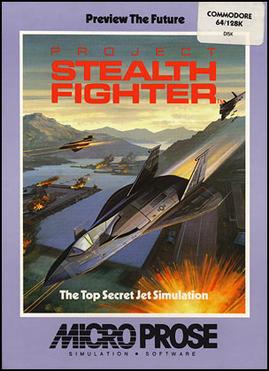
Project Stealth Fighter is a combat flight simulator released for the Commodore 64 in 1987 by MicroProse, featuring a fictional United States military aircraft. During the time of the game's release, there was heavy speculation surrounding a missing aircraft in the United States Air Force's numbering system, the F-19. Project Stealth Fighter was later renamed F-19 Stealth Fighter and was remade in 1988 for the 16-bit systems with much improved graphics.
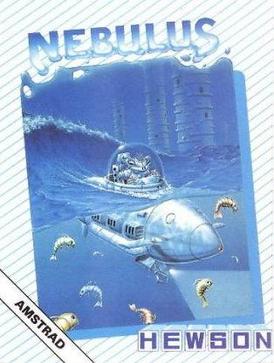
Nebulus is a platform game created by John M. Phillips and published by Hewson Consultants in the late 1980s for home computer systems. International releases and ports were known by various other names: Castelian, Kyorochan Land, Subline, and Tower Toppler.

The Eidolon was one of two games that were part of Lucasfilm Games' second wave in December 1985. The other was Koronis Rift. Both took advantage of the fractal technology developed for Rescue on Fractalus!, further enhancing it. In The Eidolon, Rescue's fractal mountains were turned upside down and became the inside of a cave.

The Guild of Thieves is an interactive fiction game by Magnetic Scrolls first published by Rainbird in 1987. The game takes place in Kerovnia, the setting of the company's earlier The Pawn.

Spindizzy is an isometric video game released for several 8-bit home computers in 1986 by Electric Dreams Software. It combines action and puzzle video game elements. Players must navigate a series of screens to explore a landscape suspended in a three-dimensional space. Development was headed by Paul Shirley, who drew inspiration from Ultimate Play the Game games that feature an isometric projection.

The Heroes of Karn is a 1983 adventure game written by Ian Gray. It was released by Interceptor Micros for the Commodore 64, Amstrad CPC and ZX Spectrum. Music was written by Chris Cox. The Spectrum and Amstrad versions were adapted by David M. Banner with graphics by Terry Greer. A sequel, Empire of Karn, was released in 1985 on the Commodore 64.

SDI - Strategic Defense Initiative, or simply titled SDI and sometimes known as Global Defense, is a 1987 horizontally scrolling shooter produced and released internationally in arcades by Sega. It was later ported to home computers and game consoles, some by other companies. Players control a satellite and must destroy enemies by moving a crosshair over them and firing the satellite's weapons.

Tiger Road is a hack and slash platform game originally released in 1987 as a coin-operated arcade video game.

Fusion is a scrolling multidirectional shooter developed by Bullfrog Productions and published by Electronic Arts in 1988 for the Atari ST and Amiga.
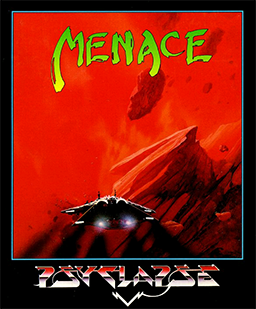
Menace is a horizontally scrolling shooter developed by DMA Design and published by Psygnosis. It was originally released for the Amiga in 1988, and was ported for the Atari ST, Commodore 64, and MS-DOS in 1989. The game is set on the planet of Draconia, where players are tasked with destroying the planet's defence mechanisms in order to kill the harmful creatures.

Time and Magik is a trilogy of interactive fiction games by Level 9. The individual games were initially released separately in 1983-1986. In 1988 the three games were revised, expanded and re-released together as a compilation by Mandarin Software, a division of Europress Software.
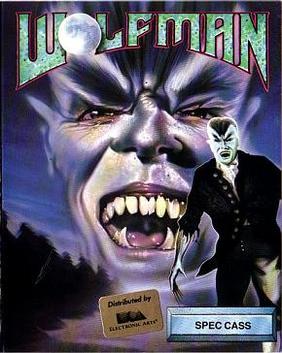
Wolfman is a text adventure video game released by CRL in 1988 for the Commodore 64, Amstrad CPC, and ZX Spectrum home computers.

Corruption is an interactive fiction game by Magnetic Scrolls released in 1988. In this game, a successful stockbroker suddenly finds himself embroiled in a world of crime and danger.

Cloud Kingdoms is a puzzle game published by Millennium Interactive for the Amiga, Atari ST, Commodore 64, and MS-DOS in 1990. The player controls Terry, a green bouncing sphere, on a quest to recover his magic crystals that have been stolen by Baron von Bonsai. To do so, he must travel through the eponymous Cloud Kingdoms, avoiding enemies and hazards while collecting all of the crystals within the game's time limit. The game was developed by Dene Carter at Logotron, with sounds and music composed by David Whittaker.
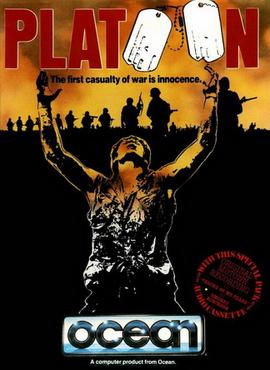
Platoon is an action game developed by Ocean Software and published by Data East for the Amiga, Amstrad CPC, Apple II, Atari ST, Commodore 64, PC DOS and ZX Spectrum in 1987–1988. The NES version was ported and published by Sunsoft in September 1988. It was the first video game adaptation of the 1986 war film Platoon, followed by the 2002 game.



















